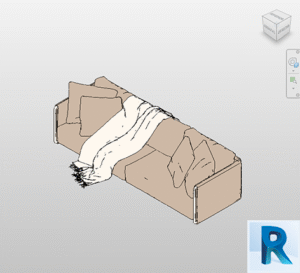In today’s fast-paced construction world, effective collaboration between stakeholders is critical to success. Enter the BIM Collaboration Format (BCF), an open standard that facilitates communication among construction teams working on BIM (Building Information Modeling) projects. It serves as a unified language, enabling clear discussions about design and construction issues while ensuring that everyone involved is on the same page.
What is BIM Collaboration Format (BCF)?

BCF, or BIM Collaboration Format, is an open standard designed to simplify the exchange of information between team members working on a BIM project. The key function of BCF is to allow professionals to share comments, feedback, and issues directly related to IFC models without altering the model itself. This makes it an indispensable tool for project managers, architects, engineers, and other stakeholders who need to collaborate seamlessly on construction projects.
The beauty of BCF lies in its simplicity. It doesn’t require modifying the existing model but allows teams to focus on communication. By attaching comments, issues, or notes directly to the model view, team members can discuss specific points in real-time, enhancing clarity and reducing the risk of miscommunication.
Why BCF Matters in Construction
BCF provides a standardized method for discussing and resolving design issues within a BIM environment. In construction projects, where multiple stakeholders often have to collaborate across different software platforms, the need for a universal format becomes apparent. BCF addresses this challenge by ensuring that communication regarding design revisions, construction details, or conflicts remains consistent and traceable.
One of the primary advantages of BCF is its ability to improve transparency and accountability. By providing a shared platform for exchanging information, it ensures that all team members are informed about changes and decisions. This significantly reduces the risk of errors and misinterpretations, leading to more efficient decision-making and a smoother workflow.
Key Features of BCF
The most crucial aspect of BCF is that it allows teams to share and discuss project issues without directly manipulating the IFC model. This ensures that the integrity of the model remains intact while still fostering collaboration. Other key features include:
- Issue Tracking and Resolution: BCF provides a clear structure for identifying and resolving design issues. Team members can mark specific areas of the model, attach comments or images, and suggest solutions, all while maintaining a clear audit trail of changes.
- Cross-Platform Compatibility: Since BCF is an open standard, it works across various software platforms used in BIM, such as Revit, ArchiCAD, and Tekla Structures. This allows stakeholders using different tools to communicate effortlessly.
- Real-Time Collaboration: BCF facilitates real-time collaboration by enabling team members to share issues as they arise. This helps teams stay updated on project developments, reducing the likelihood of delays.
Enhancing Collaboration and Communication with BCF

BCF transforms how teams communicate during construction projects. With its user-friendly interface, BCF enables stakeholders to exchange feedback, comments, and observations on specific areas of the model. It removes the need for lengthy email chains or meetings and focuses on real-time interaction, improving workflow efficiency.
BCF also provides a central location for all comments and issues, ensuring that nothing gets lost in translation. This centralized communication reduces misunderstandings, helping to streamline decision-making and allowing teams to focus on solving the problems that matter most.
Reducing Errors and Boosting Efficiency
Construction projects are complex, and communication gaps can lead to costly mistakes. BCF helps eliminate this by providing clear and concise methods of issue reporting. By linking feedback to specific parts of the model, the risk of ambiguity is reduced, allowing the team to address issues promptly.
For project managers, this level of clarity makes it easier to track progress and identify areas where delays could occur. By resolving issues early, BCF helps keep projects on schedule and within budget.
Simplifying Change Management and Revisions
Managing revisions and changes in construction projects can be daunting. However, BCF streamlines this process by offering a consistent format for tracking design changes. Whether you’re revising a floor plan or addressing structural concerns, BCF ensures that all changes are logged and traceable.
This transparency is crucial when coordinating multiple teams, as it provides a clear record of who made what change and why. By improving traceability, BCF minimizes confusion and fosters a collaborative environment where stakeholders work together to resolve conflicts.
Final Thoughts
BCF is more than just a communication tool—it’s a solution for enhancing collaboration, reducing errors, and improving overall project outcomes in construction. By offering a universal platform where stakeholders can exchange feedback and address issues, it simplifies the complexities of BIM projects. With its ability to streamline change management, boost accountability, and improve efficiency, BCF is indispensable for any team looking to optimize their workflow in construction.
Free Revit families on Bimshares.com





